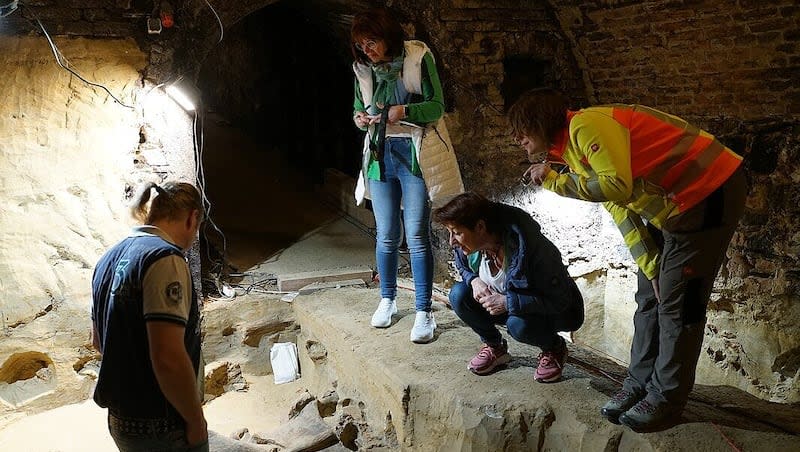Winemaker finds 40,000-year-old mammoth bones in his wine cellar

A winemaker in Austria was doing some renovations to his wine cellar when he stumbled upon what he thought was a piece of old wood. He later figured out that it was part of an ancient mammoth, according to NBC News.
His discovery has been hailed as “sensational” by the Austrian Archaeological Institute of the Austrian Academy of Sciences.
A researcher from the institute told CNN that the winemaker originally wanted to level out his cellar “because it was sloping and he removed some concrete in the center.” It was at that point that he found the artifacts.
“Then he looked more closely and remembered a tale from his grandfather who in the sixties extended the cellar and found some mammoth molars,” the researcher said.
The winemaker shared with the Austrian Broadcasting Corporation that he had discovered the bones back in March, saying, “I thought it was just a piece of wood left by my grandfather. But then I dug it out a bit and then I remembered that in the past my grandfather said he had found teeth. And then I immediately thought it was a mammoth,” per NBC News.
Why this find is monumental to Austria
An official statement from the Austrian Archaeological Institute of the Austrian Academy of Sciences explains that when experts went in to dig out the mammoth bones, they found all the bones laying on top of one another in a single layer and concluded the bones came from three different mammoths.
Hannah Parow-Souchon, who leads the excavation said, “Such a dense bone layer of mammoths is rare.”
The last time a site like this one was excavated in Austria was at least 100 years ago, the statement said.
The team was able to date the bones to between 30,000 and 40,000 years ago, The Washington Post reports, but a more accurate date will be determined once charcoal also found with the bones has been dated.
Researchers believe the bones are part of a previous site in the next cellar over where archaeologists had found flint tools and jewelry fossils.
It’s unknown how the mammoths died. They may have fallen into a trap set by hunters. According to the institute, once the bones have been excavated they will be sent to the Natural History Museum in Vienna.
Why mammoths fascinate researchers
There are discussions taking place of reviving the woolly mammoth using ancient DNA, according to The Washington Post.
One argument that supports reviving the woolly mammoth is that this species can help combat current environmental challenges caused by climate change. The mammoths could “stomp down permafrost and prevent more of it from thawing and releasing atmosphere-warming carbon into the air,” per The Washington Post.
According to wildlife conservation organization Revive and Restore, humans have been fascinated by mammoths for thousands of years, as seen by cave paintings and carvings of the creature. The organization explains, “The mammoth is intimately tied to human history. Not only were mammoths hunted, they were also idolized.”

